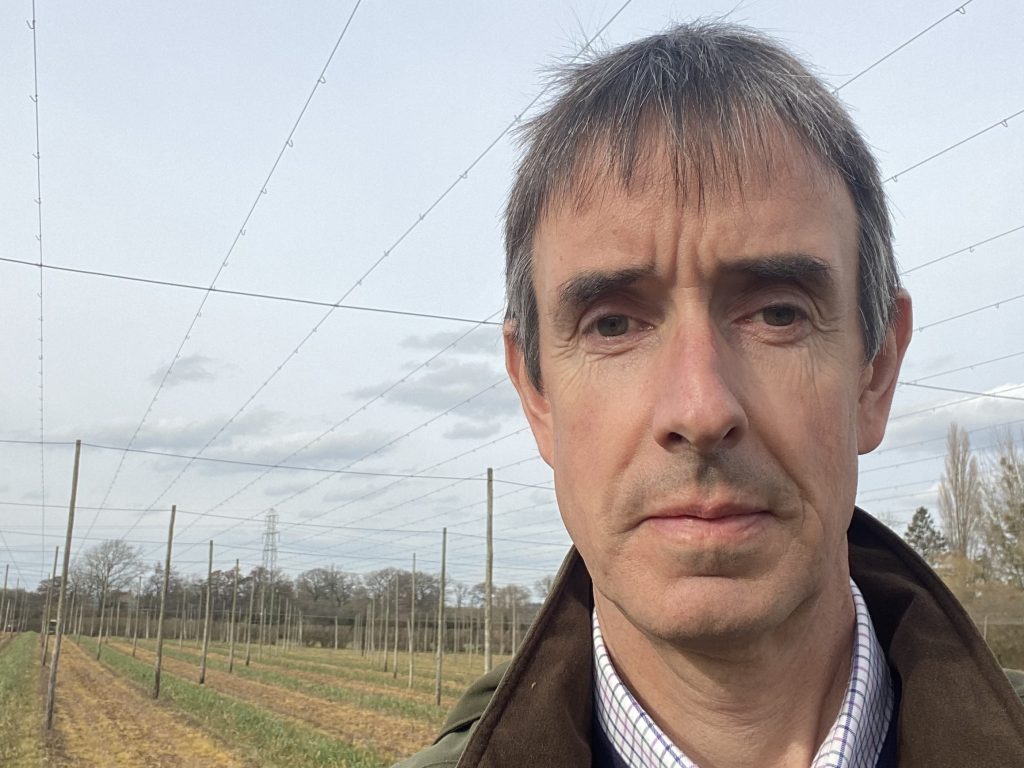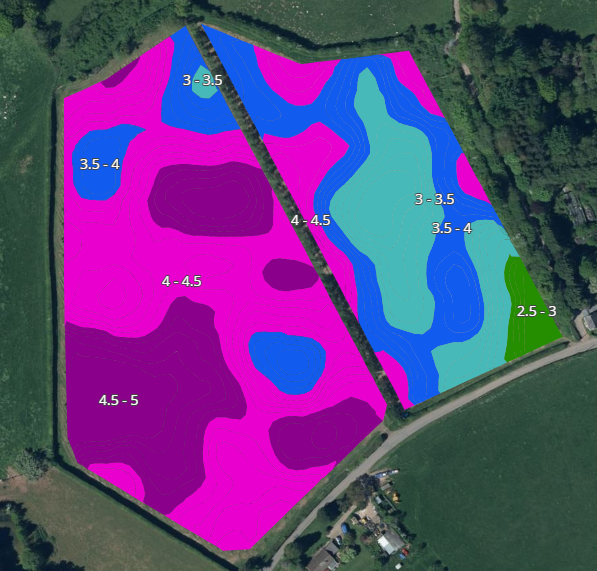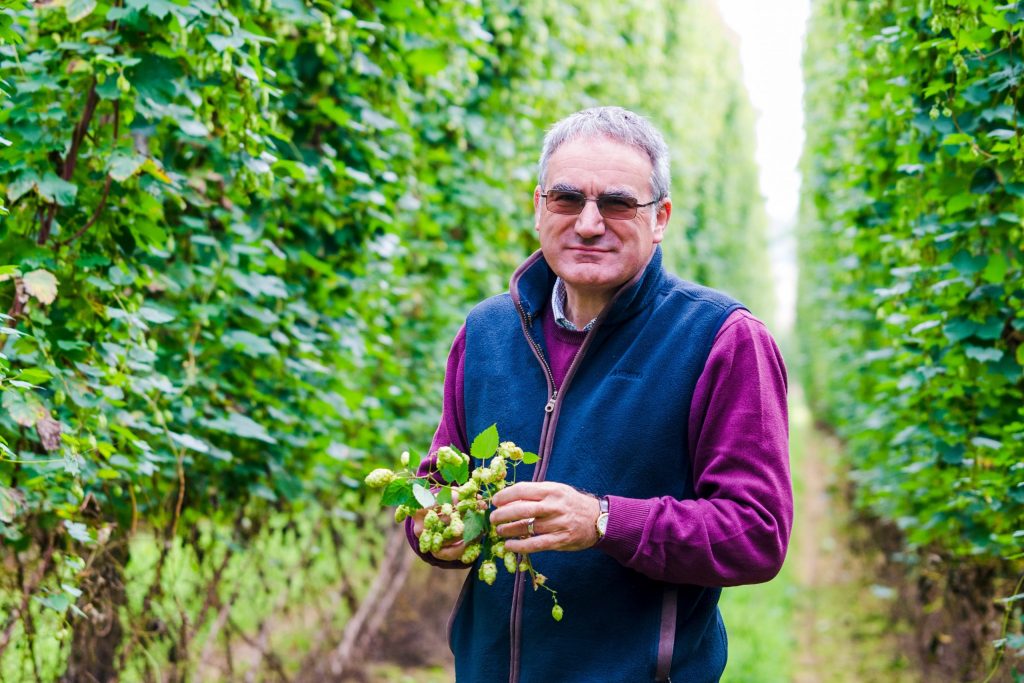Soil mapping helps drive efficiency for hop and apple grower – Press Release – Nigel Kitney, Jonathan Blackman
Digital mapping systems in horticultural crops, particularly top fruit and hops, are not yet as widely used as in broad-acre arable crops ...
But more growers are realising the potential benefits for improving consistency, yield and quality.
One such grower is Richard Capper, who manages an 80 ha family farm on the Worcestershire/ Herefordshire border, growing cider apples, dessert fruit for supermarkets, and 8 varieties of hops.
He is keen to adopt the latest technology, which he sees as key to driving efficiency and profitability in what can be a demanding business environment.
“The prices we receive don’t change very much, yet our costs can, so we are continually looking to become more efficient. We also have to follow tight Integrated Pest Management (IPM) guidelines and meet specific standards for the crops we supply, so welcome any new tools to help achieve this.”

Richard Capper, grower
Mr Capper’s move into digital mapping began in earnest during 2017, when he started using the Omnia precision farming platform to analyse multiple layers of agronomic information, working with his Hutchinsons agronomists Nigel Kitney (apples) and Jonathan Blackman (hops).
The next step came last season when the whole farm was mapped using TerraMap high definition soil scanning. The system is mounted on a utility vehicle and uses passive sensors to measure naturally emitted radiation to identify up to 21 common soil properties, including pH, phosphate, potash, trace elements, texture, organic matter, and available water. This data is “ground-truthed” with soil samples from specific points that are sent for lab analysis, thereby providing a comprehensive picture of soil quality across individual fields.
“Until now, our smaller field sizes and demands for IPM have generally been the drivers for greater precision in apple and hop production,” comments Mr Kitney.

Nigel Kitney, agronomist
“TerraMap has been a step in another direction for precision farming, one that’s really adding a new level of detail to crop management.
“There are stronger and weaker areas in any orchard or hop yard, and it’s often difficult to put your finger on exactly why. This gives us extra information to help find out what’s going on.”
Nutritional levels, for example, are measured in parts per million using TerraMap, rather than the broader soil indices, giving much greater accuracy when calculating crop requirements and application plans, he notes.
Soil texture and pH
Uploading the TerraMap information into Omnia highlights some significant variations in soil characteristics across the farm that the team can address in a much more targeted way.
Soil type has an important impact on other properties and while TerraMap results confirm the farm is predominantly on a clay loam or silty clay loam, there are various areas with higher sand content. In many cases this textural difference appears to have some correlation with patches of higher acidity.
Indeed, pH variations are often highlighted by TerraMap and this farm is no exception, Mr Kitney says.
There were notable variations both between, and within, individual fields, with some showing acidic patches of pH 5.6-5.9 where the bulk of land is closer to the optimum at 6.8-7.1.
“If some of these more variable fields had been sampled conventionally in a standard ‘W’ pattern, there’s a strong chance results would have come back showing an average pH of 6.2-6.3 and missed the acidic patches,” notes Dr Blackman.
Until now, lime has been applied on a flat-rate basis for individual fields every three to four years, based on standard soil testing.
Going forward, Mr Capper plans to use TerraMap data to formulate a variable rate application plan in Omnia, targeting lime only where it is needed to reduce pH variability.

TerraMap: Richard Capper’s potassium index in two fields (left: apples, right: hops)
Phosphate & potash
Mapping also highlights the underlying variability in soil phosphate and potash, information which will again be used as the basis for variable rate applications next season, when a new fertiliser spreader is due to be purchased.

Dr Jonathan Blackman
“Hops are very responsive to phosphate, so we like to maintain a high soil index,” says Dr Blackman.
“However, there may be areas where levels are slightly higher or lower than needed, presenting opportunities to vary applications in future.”
A good example is Chapels field, which grows two different varieties of hops. TerraMapping reveals higher potash levels on one side of the field than the other, equivalent to around a 30 kg/ha difference in crop requirement.
Previously, the field has been treated as one based on standard soil sampling results, however once the move to variable rate fertiliser has been made, Mr Capper will tailor applications to the specific requirements of each variety and the levels of soil potash.
“I didn’t set out to save money on inputs,” he says. “The aim is to focus inputs more accurately to improve the consistency and quality of our cropping. It’s about putting the right thing in the right place. If there’s a cost saving from doing this, that’s an added benefit.”
Tackling other nutritional issues
Mapping reveals generally good levels of most trace elements, although molybdenum is low across the board, particularly on sandier areas, and some fields are marginal for boron.
Molybdenum plays an important role in nitrogen use efficiency and for the ripening and storability of apples, so it is an area Mr Kitney will look at in more detail this season. “It’s easy to address molybdenum with a foliar application or one to the rooting area, but before we do anything we’ll examine what effects it is having. Getting consistent products to the supermarket shelf is absolutely key.”
Where low boron is an issue, Dr Blackman says an application around flowering may be beneficial, although decisions will be supported with in-season leaf tissue testing to precisely confirm crop requirements.
Organic matter is another soil characteristic where TerraMap shows some variability across the farm, with levels ranging from 3-3.5% on much of the hop-growing ground, up to 6-7% in the apple orchards.
Mr Capper acknowledges the traditional approach of clearing hop yards and leaving ground bare over winter does mean organic matter tends to be quite low, however he is already working to remedy this with cover crops. A rye, oat and phacelia mix is sown at a high seed rate down the rows in the autumn, then topped and incorporated into the soil in early summer before it competes with the hops.
This replenishes some of the organic matter lost when leaf and vine material is removed at the end of the season – material that is currently mulched and spread under apple trees to help suppress weeds, add organic matter and support soil biology in the orchards.
“Our understanding of soils is increasing all the time, but there’s still an awful lot more to learn. TerraMapping moves the whole game forward and as a grower it is fascinating to be able to identify differences and plan how to address them,” Mr Capper concludes.